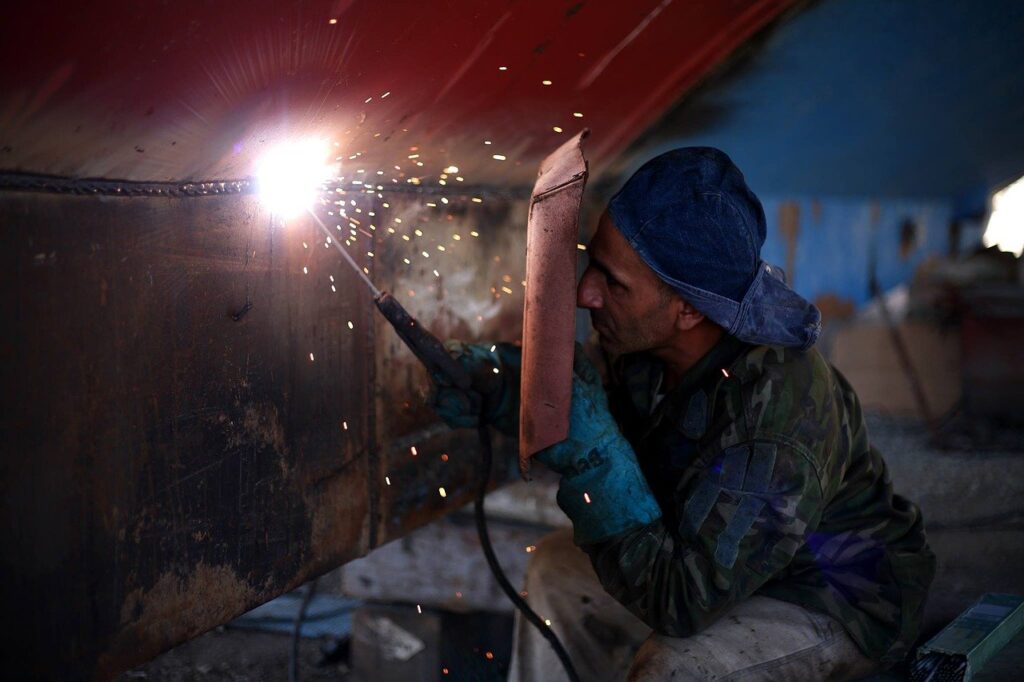In our continuous effort to advocate for construction site safety on site, we have gathered timeless advice as imparted by a panel of safety experts from old EHS Today (formerly Occupational Hazards) interviews and articles conducted and written in 2003, 2009, 2013 and 2014.
It is no secret that the highest incidence of non-fatal accidents at work in the EU-28 is typically observed in construction. For instance, there were 2,876 accidents per 100,000 persons employed in 2017.
These work-related illnesses and injuries are costing €476 billion annually, which is 3.3% of the EU’s GDP. These costs are covered by employers, and when a company does not have appropriate plans in place for pay-outs, construction businesses will eventually end up with significant costs that can greatly affect employee health, work productivity, and business revenue.
If you want to reduce workplace injuries, improve your HSE processes and better your safety management, it is crucial to institute workplace safety as a core aspect of your company’s culture.
Here are the tips from the experts:
1. Provide strong safety culture leadership
“By managing, organisations make things happen. It’s a linear, practical function. By leading, organisations show employees why safety matters, why they should be motivated to get behind it and want to do it.” — Tom Krause, Ph.D., CEO of Behavioral Science Technology Inc.
A successful safety culture starts from the top and should be led, practiced and wholeheartedly embraced by the CEO and senior management. Strong leadership coupled with robust management commitment greatly correlate with HSE performance. Having strong leaders to lead and demonstrate by example what HSE actions are recognised, tolerated and punished, significantly influences employee attitudes and behaviours towards construction site health and safety.
2. Have a comprehensive HSE management system
“Don’t have a number of stand-alone programmes such as lockout/tagout, job safety analysis, behaviour-based safety, confined space entry, etc. Instead, be sure that all elements of the safety programme are integrated into a single management system that is owned by line management.” — Richard Fulwiler, Sc.D., CIH, President, Technology Leadership Associates
An integrated HSE management system provides a structured management approach to effectively manage HSE processes, and factors and control safety risks. Developing KPIs and metrics for construction site safety performance leads to predictability and desired results that prevent problems and solve issues before they can happen.
3. Integrate safety into the business process
“Don’t make safety a ‘priority’.” — Michael S. Deak, Corporate Director, Safety and Health, Compliance Process Safety and Fire Prevention, E.I. DuPont De Nemours & Co.
By making safety a core value instead of just a priority, construction site HSE processes will remain resilient regardless of organisational changes. “The priorities of most organisations change…Our business priorities changed, but because safety, health, and the environment is a core values, they didn’t change. It’s going to be there next year, it’s there now, it was there last year.”
4. Police your HSE programme
“Management does not need to do anything special to improve the integration of occupational safety, health, and the environment into the business realm. Safety needs to be managed at the same degree as every other aspect of the business. The same amount of management skill and effort needs to be applied to safety as with quality, cost, schedule, production, etc.” — James Kendrick, CSP, President, American Society of Safety Engineers and Manager, Industrial Safety and Hygiene, Bell Helicopter Textron Inc.
Kendrick suggests using the acronym POLICE to focus on HSE management: Plan, Organise, Lead, Inspect, Correct, Evaluate.
- Plan for health, safety, and environment in all that you do on the construction site.
- Organise so that HSE is an equal player with all other construction aspects.
- Lead by example, walk the talk.
- Inspect/Investigate for construction site hazards and issues and press for timely corrective action.
- Correct items and situations discovered in a timely manner. Coach for safety performance. Commend safe activity and performance.
- Evaluate how the HSE system is functioning. Assess and develop solutions and strive for continuous improvement.
5. Take a rational disciplined approach to HSE
“Safety should not be an emotional subject any more than anything else in the business. Take a rational disciplined approach.” — Donald J. Eckenfelder
Scaring employees or playing on the emotional aspects of worksite illnesses and injuries (for example, the impact of an injury on the lives of employees and their families) does not encourage people to embrace a safety culture. Having a rational and disciplined approach to understanding the causes of why safety risks and problems occur is the way to go. When people on the construction site understand, their perspectives on worksite safety expand and the reason why these safety and HSE measures are being taken suddenly makes total sense.
6. Practice accountability for all parties
“Employee engagement is key. Everybody from the CEO down is an employee. Everyone … is engaged in the safety management process. If you don’t engage all employees, you don’t have a prayer at becoming a world-class company, in safety or in business.” — Michael S. Deak, Corporate Director, Safety and Health, Compliance Process Safety and Fire Prevention, E.I. DuPont De Nemours & Co.

Companies should engage their workers in safety procedures through periodic and continuous communication of core values, their inclusion in incident investigations, and their participation in audit teams, etc. If they see senior management who walks the talk when it comes to implementing and following HSE processes, this trickles down to the actual construction site with people taking ownership of their responsibilities and taking accountability for their mistakes.
7. Encourage an active and open dialogue
“Managers who provide regular updates and encourage open discussions to help employees better understand the company’s overall goals and their own role in helping to achieve these objectives.” — Robert Hosking, Executive Director, OfficeTeam
Keeping an active and open dialogue makes it easy for employees to talk about health, safety and environmental concerns on the construction site. Workers will have no qualms about reporting hazards right away and identifying potential issues that management may have missed.
8. Have regular worksite safety meetings
“There are several ways to engage workers, but the single, most-effective way is with monthly safety meetings. This is the opportunity to accomplish several of the key components of a strong safety culture. I want to go on record advising you to throw out the old model that we’ve been using for decades: the standard monthly safety meeting. Change the goal of the meeting from often repetitious, one-way communication, to getting people involved. I realize that’s a real shift in focus, but an important one.” — Joe Stevens, Founder, Bridge Safety Consultants
It is a bit dorky but it never hurts to be always cautious. Having regular meetings allows management and workers to review together construction site safety rules and discuss interactively preventative measures. This keeps safety as the top concern so that when something unexpected does happen on site, everyone knows exactly what to do.
9. Keep the construction site clean
“Broken tools, broken windows, dust buildup on machinery and windowsills. If it’s a construction site, you see materials piled up, cords snaking around, and trip and fall hazards everywhere. Good housekeeping is one of the best predictors of safety, and is a leading indicator.” — Howard Mavity, Partner, Fisher Phillips Atlanta Law Office, Founder and Co-Chair, Workplace Safety and Catastrophe Management Practice Group
A messy construction worksite leads to unnecessary accidents. Have HSE processes in place that conduct regular inspections for potential dangers like tangled cords, messy floors, and disorganised tools.
10. Discipline employees for safety violations
“Most employers don’t discipline employees for safety violations,” he says. “If they do, it’s because of an injury. It’s not punishment–although OSHA doesn’t see it that way–but because something happened that revealed violations of safety policies.” — Howard Mavity
Mavity believes that another leading indicator of safety is a company’s commitment to discipline safety violations, which is usually ignored by employees. Because he usually works with companies facing citations from OSHA or the Department of Labor, he has represented companies reprimanded by OSHA for axing employees due to injury on the job when in reality the employees were dismissed for performing unsafe acts at work.
How LetsBuild can help
As the project owner, contractor, or overall employer, your responsibility is to protect your employees especially while they are on the construction site. Utilise these ten construction safety tips with LetsBuild’s HSE compliance tools to provide your employees with the safest work environment.
LetsBuild will help you structure your safety management approach and digitalise your HSE processes so you can just focus on delivering projects of the best quality on time and therefore on budget.



